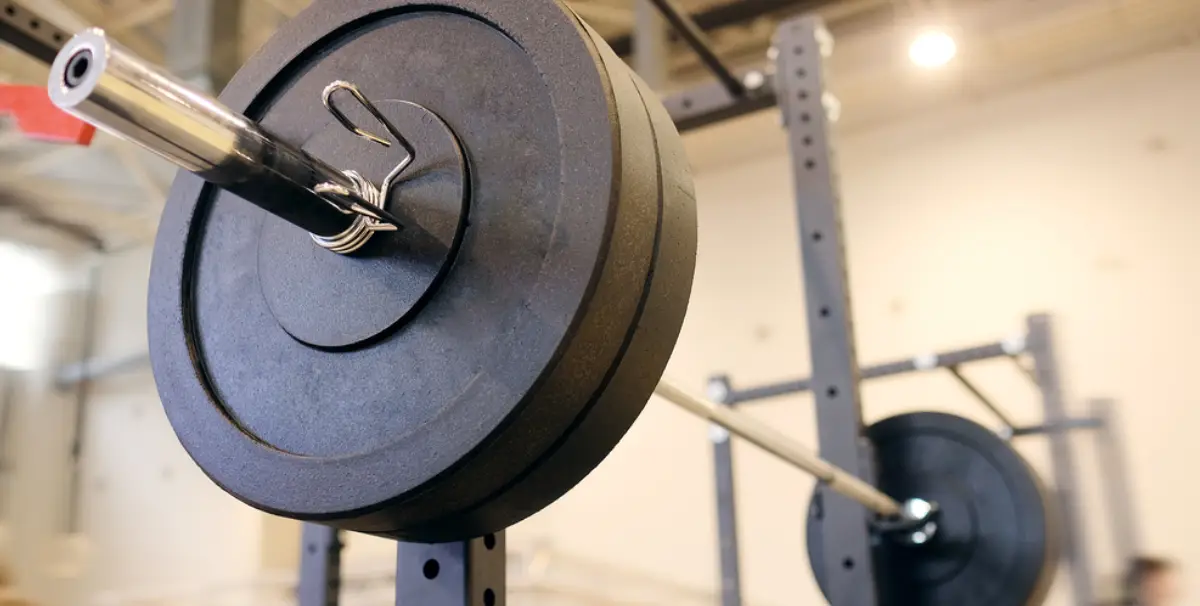Deciding between straight sets and ramping sets for your workouts can be challenging.
If you’re new to fitness or focusing on muscle endurance and toning, straight sets are your best choice. They offer a straightforward and effective way to build your fitness foundation.
On the other hand, for those with more experience, ramping sets are ideal for breaking through plateaus and maximizing strength gains.
You’ll discover how to tailor your training to your goals, whether it’s muscle growth, strength, or endurance.
Ready to find your perfect workout match?
Let’s explore together…
Understanding Straight Sets vs Ramping Sets
Straight sets involve performing a series of sets using the same weight and number of repetitions.
This approach is straightforward and allows for a consistent intensity throughout the workout.
On the other hand, ramping sets involve gradually increasing the weight with each set, starting with a lighter load and culminating in a heavier final set.
This method progressively challenges your muscles and nervous system, adapting to the increasing demands.
Pros and Cons: A Comparative Analysis
Straight Sets:
Pros:
- Predictability and ease of tracking progress.
- Consistent muscle engagement and fatigue management.
Cons:
- Potential for plateauing due to uniform intensity.
- Less stimulation of maximum strength development.
Ramping Sets:
Pros:
- Gradual warm-up reduces injury risk.
- Peaks at maximum weight, enhancing strength gains.
Cons:
- Complexity in planning and executing workouts.
- Requires careful attention to avoid overexertion.
When to Opt for Each Method
The choice between straight sets and ramping sets hinges on your fitness goals and current training level.
Straight sets are ideal for beginners and those focusing on endurance and muscle toning.
In contrast, ramping sets are better suited for intermediate to advanced athletes aiming for strength gains and overcoming plateaus.
Applying Straight Sets and Ramping Sets in Specific Contexts
While the general principles of straight sets and ramping sets are clear, their application can vary significantly based on the context of your workout.
Here’s a closer look at how each method can be optimized for different training scenarios:
Straight Sets for Specific Goals:
- Endurance Training: Ideal for exercises like long-distance running or cycling, where maintaining a consistent pace is crucial.
- Muscle Toning: Perfect for resistance training with moderate weights, focusing on higher repetitions to tone muscles without excessive bulk.
Ramping Sets for Targeted Strength Gains:
- Powerlifting Movements: Exceptionally beneficial for exercises like squats, deadlifts, and bench presses, where gradual weight increases lead to peak performance.
- Bodybuilding Focus: Effective for progressively overloading muscles during isolation exercises, such as bicep curls or tricep extensions, leading to significant hypertrophy.
Balancing Both Methods:
- Hybrid Workouts: Start with straight sets for foundational exercises to build endurance, then switch to ramping sets for your main strength-building exercises. This approach ensures a well-rounded development of both endurance and strength.
By understanding and applying these specific scenarios, you can make more informed decisions about which method to use, ensuring your training is aligned with your fitness goals.
Expert Insights: Analyzing Straight Sets for Muscle Growth
Dr. Mike Israetel, with a Ph.D. in Sport Physiology, brings invaluable expertise to muscle building.
As a co-founder of Renaissance Periodization and a recognized authority in sports science, his recommendations on straight sets are grounded in scientific principles and practical experience.
Straight Sets for Hypertrophy:
Dr. Israetel advises adjusting volume, intensity, and frequency in straight sets to maximize muscle hypertrophy. This tailored approach is key for significant muscle growth.
Emphasis on Technique:
Proper form during straight sets is crucial, as emphasized by Dr. Israetel. This ensures effective muscle engagement and injury prevention.
Progressive Overload:
Incremental intensity increases in straight sets are vital for ongoing muscle development. Dr. Israetel’s strategy involves progressively challenging the muscles for sustained gains.
Workout Variation:
He highlights the necessity of altering workout routines to prevent plateauing and maintain muscle adaptation.
Recovery and Nutrition:
Dr. Israetel underlines recovery and nutrition as integral parts of a muscle-building regimen. These elements are essential for complementing the physical training.
By incorporating Dr. Israetel’s expert insights, you can optimize your straight sets for more effective muscle growth.
Tailoring to Individual Needs
Each method offers unique benefits, and sometimes a combination of both can yield optimal results.
For instance, using straight sets for foundational exercises and ramping sets for strength-specific workouts can provide a balanced approach to muscle development and endurance.
Choosing between straight sets and ramping sets depends on various factors, including your fitness level, goals, and the specific focus of your workout. Here’s a breakdown to help you decide:
Straight Sets:
- Ideal for beginners or those returning to training after a break.
- Best for workouts focusing on endurance and muscle toning.
- Useful when aiming for consistent muscle engagement over time.
- Recommended for exercises where maintaining a steady pace is crucial, like cycling or long-distance running.
Ramping Sets:
- Suited for intermediate to advanced fitness enthusiasts.
- Optimal for strength building and overcoming training plateaus.
- Beneficial in powerlifting and bodybuilding routines.
- Effective for exercises requiring gradual intensity increase, like squats or bench presses.
Understanding the Context:
Incorporating the right method into your workout routine can significantly impact your training effectiveness.
For instance, if you’re a beginner, straight sets provide a stable and manageable approach to build endurance and muscle memory. They allow you to focus on form and consistency, which are crucial in the early stages of training.
On the other hand, if you’re an experienced lifter aiming to increase your strength, ramping sets offer a strategic way to push your limits. By progressively increasing the weight, you challenge your muscles more intensely, leading to greater strength gains.
This method also helps in preparing your body for heavier lifts, reducing the risk of injury.
Balancing for Optimal Results:
For many athletes, a combination of both methods yields the best results.
Starting a workout with straight sets for foundational exercises helps in building endurance, while transitioning to ramping sets for main strength-building exercises maximizes strength gains.
This balanced approach ensures comprehensive development, catering to both endurance and strength aspects of fitness.
Incorporating Straight Sets and Ramping into Your Routine
Understanding the mechanics of straight sets and ramping sets is just the beginning. Implementing them effectively into your training routine is crucial for achieving desired results.
Practical Tips for Effective Integration
- Start with a Clear Plan: Outline your fitness goals and choose the method that aligns with your objectives.
- Monitor and Adjust: Regularly assess your progress and be ready to modify your approach as needed.
- Balance is Key: Incorporate both methods to target different muscle groups and aspects of fitness.
Detailed Comparison: Straight Sets vs. Ramping Sets in Different Scenarios
When choosing between straight sets and ramping sets, consider the specific context of your workout:
- Muscle Endurance and Toning: Straight sets, with their consistent weight and repetition scheme, are excellent for endurance training. They allow for sustained muscle tension over a longer period, which is ideal for toning.
- Maximum Strength Development: Ramping sets shine in building peak strength. By gradually increasing the weight, you prepare your muscles and nervous system for the heavier loads, leading to significant strength gains.
Blending Straight Sets and Ramping Sets in Your Routine
Combining both methods can yield comprehensive benefits:
- Start with Straight Sets: Begin your workout with straight sets for foundational exercises to build endurance and muscle memory.
- Peak with Ramping Sets: Transition to ramping sets for your main strength-building exercises. This approach helps in progressively loading the muscles after they are adequately warmed up.
Tailored Advice for Diverse Fitness Goals
- For Muscle Building: Focus on ramping sets to progressively overload the muscles. Incorporate straight sets with higher repetitions for auxiliary exercises.
- For Strength Training: Prioritize ramping sets with a focus on increasing the weight in each set. Use straight sets for warm-up exercises.
- For Recovery and Endurance: Lean more towards straight sets with moderate weight and higher repetitions. This approach is less taxing on the muscles and joints, aiding in recovery.
Enhanced Strategies for Effective Training
- Listen to Your Body: Adjust the weight and repetitions based on your current fitness level and how your body feels during the workout.
- Consistency is Key: Regardless of the method, maintaining a consistent workout schedule is crucial for seeing results.
- Record Your Progress: Keep a training log to track the weights, sets, and reps. This record-keeping is vital for planning future workouts and tracking improvements.
Concluding Thoughts: Making the Right Choice
Both straight sets and ramping sets have their unique advantages and can be effective depending on your fitness goals and preferences. Beginners may find straight sets more approachable, while those seeking strength gains might prefer ramping sets.
Ultimately, the best approach is one that aligns with your personal goals, challenges you appropriately, and keeps you engaged and motivated in your fitness journey.
The Final Verdict: Which is Best for You?
Ultimately, the choice between straight sets and ramping sets depends on your personal fitness goals, experience level, and preferences.
While straight sets offer simplicity and consistency, ramping sets provide dynamic challenges and potential for greater strength gains.
Consider your objectives and experiment with both methods to discover what works best for you.


